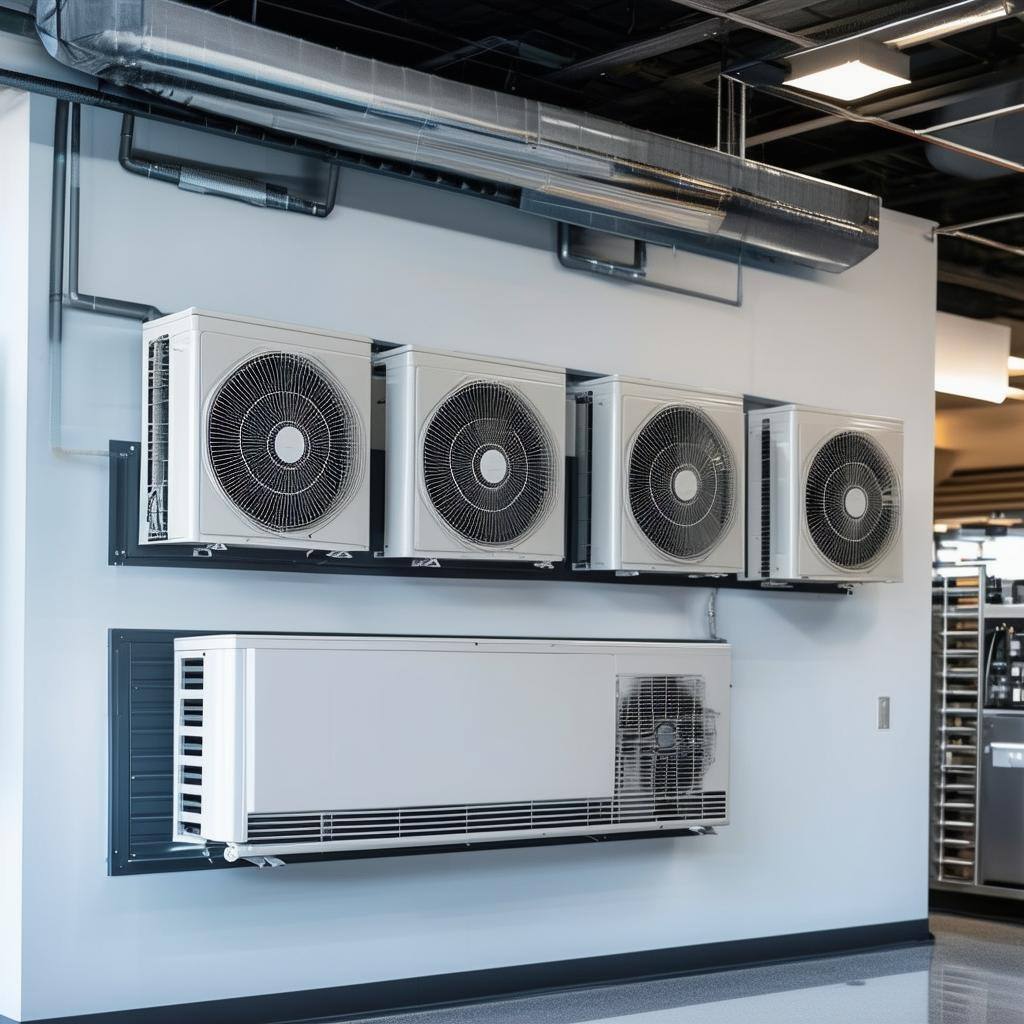Heating, ventilation, and air conditioning (HVAC) equipment are vital for businesses to maintain comfort and efficiency in their operations. Financing or leasing heating and cooling equipment enables companies to access modern, energy-efficient systems without large upfront costs, ensuring uninterrupted service and compliance with energy standards.
Why Finance or Lease Heating and Cooling Equipment?
-
Cost Management:
- Avoid the significant upfront expense of purchasing new equipment.
-
Energy Efficiency:
- Upgrade to advanced, energy-saving HVAC systems to reduce operational costs.
-
Tax Benefits:
- Monthly lease payments may be tax-deductible, and financed equipment might qualify for depreciation.
-
Improved Cash Flow:
- Fixed monthly payments allow for predictable budgeting.
-
Scalability:
- Add or replace equipment as business needs grow or change.
Types of Heating and Cooling Equipment Eligible for Financing
-
Commercial HVAC Systems:
- Central air conditioning and heating units for businesses.
-
Energy-Efficient Units:
- High SEER-rated air conditioners, heat pumps, and furnaces.
-
Industrial Cooling Systems:
- Chillers, evaporative coolers, and large-scale refrigeration units.
-
Ventilation Systems:
- Air purifiers, ductwork, and fans.
-
Smart Climate Control Systems:
- Programmable thermostats, IoT-enabled HVAC systems, and zoning systems.
-
Specialized Equipment:
- Climate control solutions for data centers, manufacturing, and healthcare facilities.
Benefits of Heating and Cooling Equipment Financing & Leasing
-
Access to Modern Technology:
- Upgrade to the latest systems with enhanced efficiency and environmental compliance.
-
No Large Upfront Payments:
- Spread costs over time with manageable monthly payments.
-
Flexible Options:
- Choose between financing plans or leasing arrangements that suit your budget and needs.
-
Reduced Downtime:
- Replace outdated or malfunctioning equipment promptly without financial strain.
-
Compliance with Regulations:
- Meet industry and environmental standards for heating and cooling systems.
-
Option to Own:
- Leasing agreements often allow businesses to purchase the equipment at the end of the lease.
Financing & Leasing Options for Heating and Cooling Equipment
-
Equipment Loans:
- Borrow funds to purchase HVAC equipment outright, with ownership upon repayment.
-
Operating Lease:
- Rent the equipment for a specific period with the option to upgrade or return it.
-
Capital Lease:
- Lease-to-own arrangements with ownership transferring at the end of the term.
-
Vendor Financing:
- Financing directly through HVAC manufacturers or dealers.
-
Deferred Payment Plans:
- Start payments after installation or a set revenue period.
-
Seasonal Payment Plans:
- Payment schedules aligned with business revenue cycles (e.g., higher payments during peak seasons).
How to Qualify for HVAC Equipment Financing
-
Business Financials:
- Provide income statements, balance sheets, and cash flow projections.
-
Credit Score:
- Strong credit improves terms, but lenders may accommodate varying credit profiles.
-
Business Longevity:
- Established businesses with a proven track record may qualify for better rates.
-
Down Payment:
- Some options require minimal or no upfront payment.
-
Project Scope:
- Detailed plans for the equipment’s purpose and expected ROI.
Industries That Benefit from Heating and Cooling Equipment Financing
-
Hospitality:
- Hotels, resorts, and restaurants need reliable climate control for guest comfort.
-
Healthcare:
- Clinics and hospitals require specialized systems for sterile and controlled environments.
-
Retail:
- Stores need efficient HVAC systems to enhance the shopping experience.
-
Manufacturing:
- Factories and production facilities rely on climate control for operational efficiency.
-
Data Centers:
- Critical cooling systems prevent overheating of servers and equipment.
-
Education:
- Schools and universities benefit from upgraded systems for energy savings and comfort.
Steps to Secure Heating and Cooling Equipment Financing
-
Evaluate Needs:
- Determine the type, size, and efficiency of equipment required.
-
Research Providers:
- Compare offers from banks, credit unions, and specialized equipment lenders.
-
Prepare Documentation:
- Gather financial statements, business information, and quotes for the equipment.
-
Submit Application:
- Provide necessary details to the financing or leasing provider.
-
Review Terms:
- Understand interest rates, repayment schedules, and end-of-term options.
-
Finalize Agreement:
- Once approved, arrange delivery and installation of the equipment.
Key Considerations
-
Energy Efficiency:
- Investing in energy-efficient equipment reduces long-term operational costs.
-
Maintenance Costs:
- Some leasing plans include maintenance services, reducing unexpected expenses.
-
Scalability:
- Opt for plans that allow for system upgrades or expansions as your business grows.
-
Tax Implications:
- Consult with a tax professional to maximize deductions and benefits.
Conclusion
Financing or leasing heating and cooling equipment provides businesses with the flexibility to access advanced systems without a significant upfront investment. Whether you’re replacing outdated systems or expanding operations, these options help businesses maintain comfort, compliance, and cost-efficiency. Partnering with the right lender ensures that you receive tailored terms to meet your specific operational needs.











